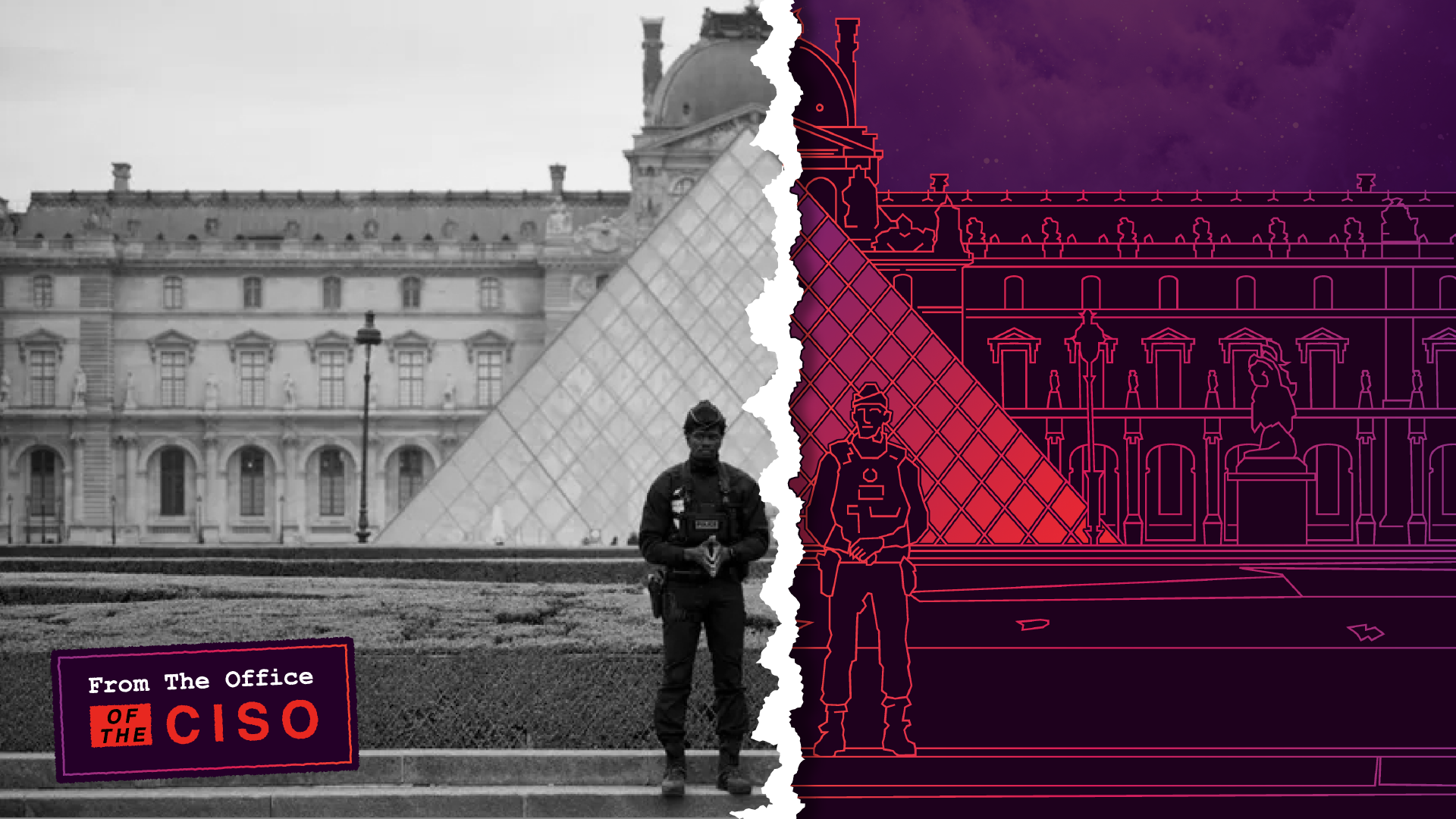From the Office of the CISO: The 7-Minute Heist – Why Your Cloud Would’ve Fallen, Too


Everyone loves a cinematic breach. But the punchline is ugly: most “sophisticated attacks” succeed because basic controls are missing. The recent high profile Louvre heist is a perfect reminder. Swap marble halls for cloud platforms and the pattern is the same.
The thieves did not outsmart physics; they exploited blind spots, stale procedures, and trust assumptions. Sound familiar? If your MFA is not phishing resistant, your logs are not unified and searchable, your backups are not immutable and tested, and your access reviews are theater, then you are running a very expensive illusion of safety.
Security failure usually happens not because a threat is unstoppable, but because the fundamentals are ignored. Tools do not fix fundamentals. Discipline does. The lessons from Paris map directly to cloud environments, so here are the highlights and the advice that goes with them.
Stop buying “advanced” until you can pass basic hygiene 101
In the heist, alarms existed but coverage, maintenance, and coherence were missing. Think cameras offline, outdated software, and dusty playbooks.
How that maps to cloud security:
Coverage: Every critical action must hit centralized, queryable logs: authentication, admin changes, data egress, agent and tool calls. If you cannot trace a privileged action within five minutes, it did not happen for you.
Currency: Patch and rotate like you mean it. Tokens, credentials, dependencies. Stale equals exposed.
Coherence: Controls must work together. IAM, network egress, logging, and approvals should operate as a system, not a shopping list.
Teaching moment: The 5x5 Hygiene Drill
In five workdays, verify five boring but predictive controls:
- Phishing resistant MFA (FIDO2 or Passkeys) for all admins and support paths.
- Break glass accounts = zero active; prove they are vaulted, rotated, and tested.
- Log completeness: 100 percent of critical services produce correlated, time synced logs in one place.
- Immutable backups: restore a representative system today and measure the time.
- Least privilege recertification: pick one high risk role or app and remove every entitlement you cannot justify.
Freeze all net new security purchases for 30 days. Use the time to prove the five above. If that feels uncomfortable, that is your signal.
Security is not a project. It is a production system.
The museum had controls; the program lagged. In cloud terms, change is constant, so “we implemented” is irrelevant without operate, measure, and improve.
Teaching moment: Controls as Code and Evidence as Product
Controls as Code: Policies in version control, CI checks for misconfigurations, and auto remediation on drift.
Evidence as Product: Dashboards that leadership can read: time to revoke, time to restore, % FIDO2, % egress-restricted services, % assets with complete logs. Real time data, not slides.
Tie success metrics to evidence of control health instead of tool adoption.
AI raised the stakes. Treat agents like interns with root.
Modern programs add AI assistants and agents. That is powerful and risky. Agents click buttons, move data, and chain tools.
Minimums for AI features:
- Scoped tools and allow lists. Agents should only touch what you explicitly approve.
- Retrieval sandboxes. No cross-customer or cross-tenant data bleed.
- Human in the loop for high-risk actions such as publishing or data export.
- Per tenant audit logs for prompts, model calls, and actions. Logs should be searchable immediately, not after an incident.
No agent should run in production without an egress policy and a tested kill switch.
Trust is a KPI, not a feeling
After the Louvre breach, the museum lost more than jewels. It lost confidence. Your equivalent is customer and regulator trust.
Teaching moment: The Trust Dashboard
Publish these four numbers internally and to customers where appropriate:
- Time to revoke for a compromised admin credential.
- Time to restore from immutable backup to serving traffic.
- % provenance preserved for AI generated assets.
- % critical paths protected by FIDO2 and egress controls.
If any metric requires a meeting to compute, you do not own it.
The Heist to Cloud Map
Camera blind spots → Log blind spots
Old locks and badges → Legacy auth and long-lived tokens
Single guard on duty → Single SSO with overprivileged roles
No dry runs → Unrehearsed incident response and untested restores
Final word
You do not need perfect security. You need unfashionable rigor: phishing-resistant identity, coherent logging, aggressive least privilege, tested restores, and governed AI. Ship the 5x5. Automate the evidence. Assume your next attacker only needs seven minutes.
Cloud Security Partners recently released the AWS Security Top 10 eBook, where we dig deeper into several of these themes with real-world examples and practical guidance. If you are interested in strengthening the fundamentals across your AWS environment, you should download it and take a look.
Hope you enjoyed this first installment of From the Office of the CISO, our series focused on practical, real world lessons that help organizations strengthen security fundamentals, reduce risk, and build long term trust. More coming soon.
Rinaldi Rampen is the CISO of Cloud Security Partners. He guides the company’s commitment to empowering organizations facing complex cloud security challenges with confidence and resilience. Central to his role is building and sustaining deep customer trust, ensuring that every security decision, strategy, and recommendation is grounded in integrity, transparency, and measurable business value. He provides executive leadership and strategic direction across customer-facing security initiatives, ensuring alignment with business objectives, regulatory requirements, and industry best practices.
Stay in the loop.
Subscribe for the latest in AI, Security, Cloud, and more—straight to your inbox.
